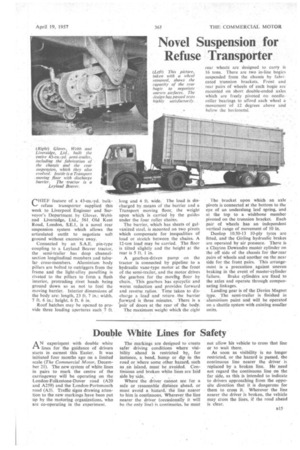Double White Lines for Safety
Page 49

If you've noticed an error in this article please click here to report it so we can fix it.
AN experiment with double white lines for the guidance of drivers Starts in earnest this Easter. It was initiated four months ago on a limited scale (The Commercial Motor, December 21). The new system of white lines in pairs to mark the centre of the carriageway will be operating on the London-Folkestone-Dover road (A20 and A259) and the London-Portsmouth road (A3). Traffic signs drawing attention to the new markings have been put up by the motoring organizations, who are co-operating in the experiment.
The markings are designed to create safer driving conditions where visibility ahead is restricted by, for instance, a bend, hump or dip in the road or Where some other hazard,'such as an island, must be avoided. Continuous and broken white lines are laid side by side, '
Where the driver cannot see for a safe or reasonable distance ahead, or must avoid a hazard, the line nearer to him is continuous. Wherever the line nearer the driver (occasionally it will be the only line) is continuous, he must
not allow his vehicle to cross that line or to wait there.
As soon as visibility is no longer restricted, or the hazard is passed, the continuous line nearer the driver is replaced by a broken line. He 'need not regard the continuous line on the far side, as this is intended to indicate to drivers approaching from the opposite direction that it is dangerous for them to cross it. Wherever the line nearer the driver is broken, the vehicle may cross the lines, if the road ahead is clear.




























































































